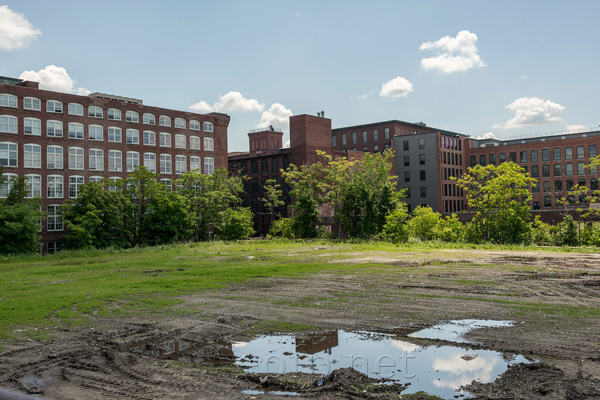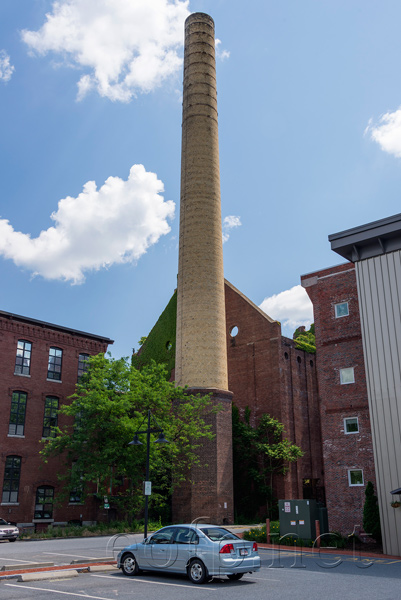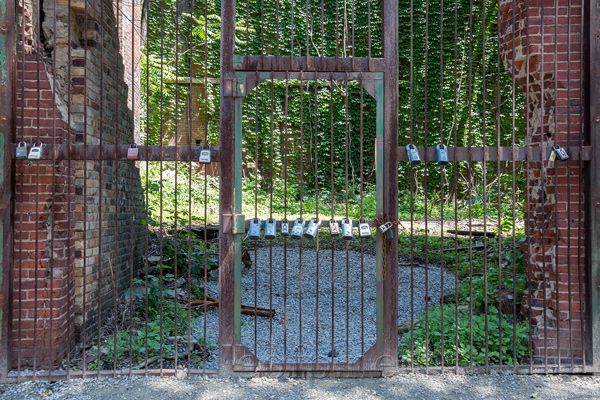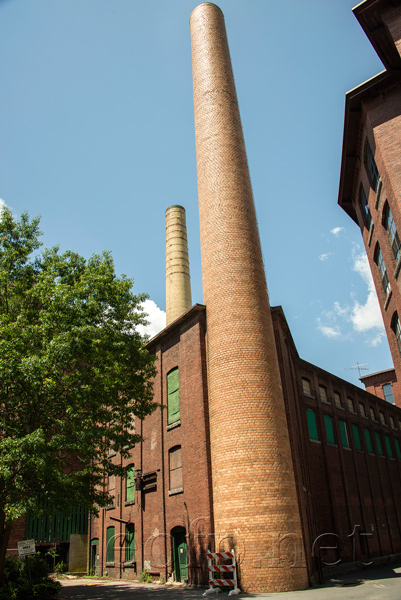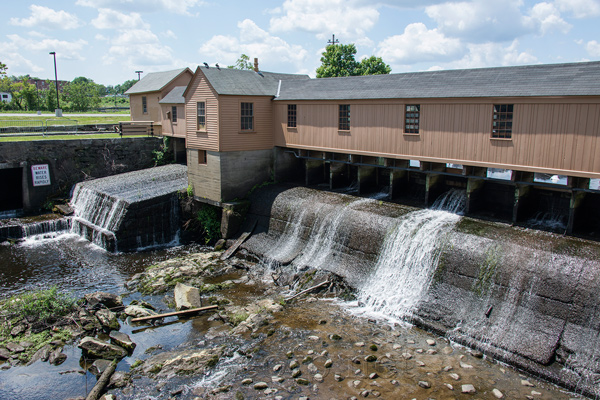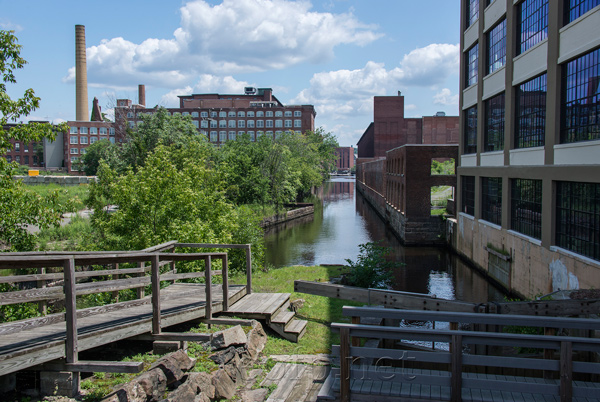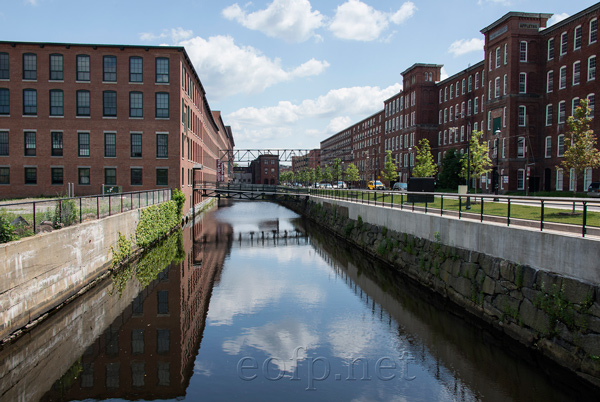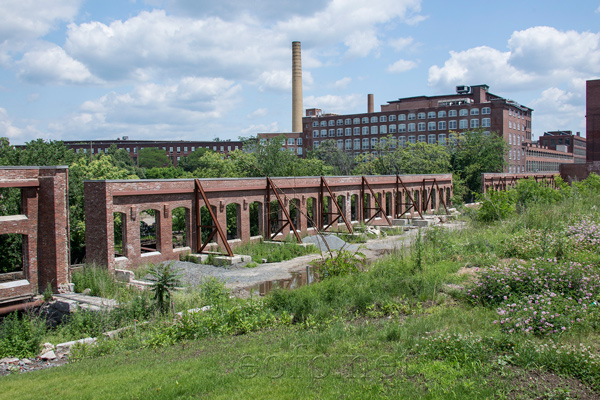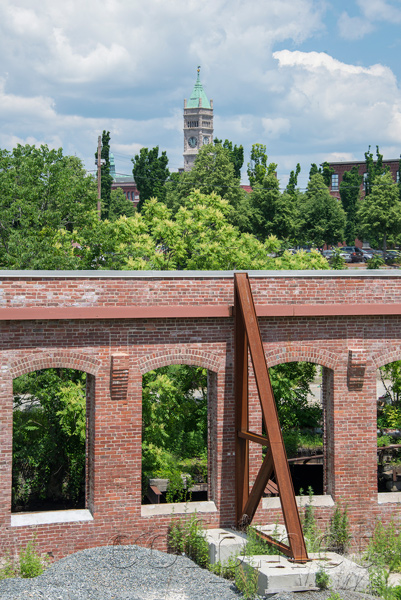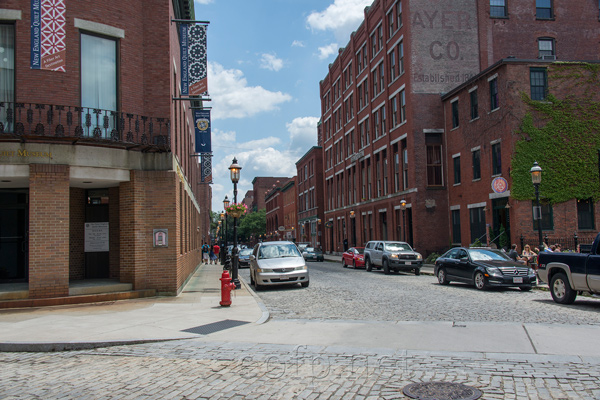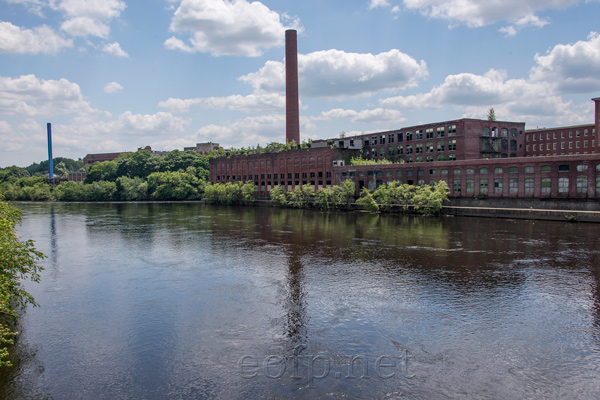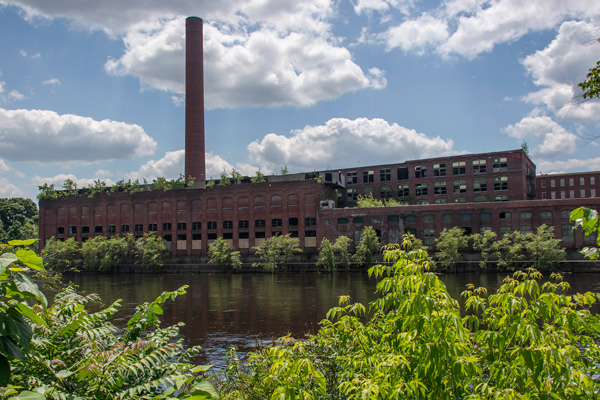11/22/2013
Lowell, Massachusetts
Lowell, Massachusetts
Lowell Massachusetts is sometimes considered the birthplace of the American industrial revolution. It's the home of the Lowell National Historic Park which is the largest, best developed park in the United States that focuses on industrial history. Lowell was founded in the 1820s as a planned industrial city. It became the center of textile manufacturing and one of the largest industrial centers in the United states by the 1850s. Lowell was built around an elaborate system of power canals that diverted water from the Merrimack river through the city. Mills were built alongside the canals utilizing the power of the flowing water. Lowell was the first project developed by the group of Boston investors that would later develop Holyoke, Chicopee, Lawrence and other planed industrial cities in New England. The population of Lowell peaked in 1920 at 112,759. After 1920 Lowell declined as textile manufacturers left the city and New England for new locations in the South.
Lowell, Massachusetts
Lowell suffered a serious decline after the 1920s. The primary industry in Lowell had been textiles but other manufacturers producing machinery and munitions had also located there. By the 1950s Lowell had lost almost all of it's industrial employers and it's population was rapidly shrinking. From the 1930s to the 1950s several neighborhoods in Lowell were the victims of "slum clearance" projects where historic buildings were bulldozed and replaced with housing projects. Many historic industrial, commercial and residential buildings were torn down, burned or abandoned in Lowell from the 1930s to the 1970s and Lowell developed a reputation as a crime plagued urban wasteland. Preservation efforts began in earnest in 1974 with the establishment of Lowell Heritage State Park. The preservation and redevelopment history of Lowell is at least as interesting to me as the industrial history of Lowell. 1978 The Lowell National Historic Park was established. During the 1970s the wholesale destruction of the city was effectively stopped and redevelopment efforts began to take root. Much of the city had been destroyed by that time. Much of that destruction was in the form of federally financed housing projects and other "urban renewal" projects. Enough of historic Lowell survived that it has now become an attractive location to live for some commuters to Boston. Businesses have also relocated to Lowell from Boston taking advantage of cheap space in the old mill buildings.
Lock boxes for Condos in Lowell, Massachusetts
Lowell's turn-around since the 1970s has not been smooth. An influx of immigrants has helped stabilize the city's population. Since 1980 the population has actually increased from 92,418 to 106,519 in 2010. Many of the new residents are from Puerto Rico and Cambodia. Some new residents live in condominiums in converted mill buildings. Some commute to Boston or nearby suburbs to work. Others work at local small companies, hospitals or the University of Massachusetts Lowell campus. After a moment of hopeful revival in the 1980s Lowell suffered a spike of crime in the 1990s and it's reputation as a hub for the drug trade was further cemented by media reports and the documentary film "High on Crack Street: Lost Lives in Lowell". The situation has improved since then. I felt perfectly safe in the areas of Lowell I walked around. In spite of it's large concentration of housing projects, the central, historic core of Lowell seems much less dysfunctional than the core of Holyoke which shares a similar history.
Lowell, Massachusetts
Enough of the historic commercial district survived along Middle, Merrimack and Market street that it has become something of a destination filled with boutique shops and restaurants. The conversion of former industrial buildings to residential use has helped fuel the commercial growth in central Lowell. Visiting Lowell is very interesting and there are lots of things to do. In addition to the Lowell National Historic Park, Lowell has a quilt museum, a streetcar museum and the American Textile History Museum.
The National Historic park is comprised of buildings parklets and exhibits scattered throughout central Lowell. The main park visitor center is on Market street. Parking for the center is close by on Broadway. The signs directing visitors from the parking lot to the visitor center are confusing and or nonexistent. I had to ask someone for directions. The lot is a pay lot unless you have someone at the visitor center validate your ticket (for free). A lot of the more interesting buildings and exhibits are several blocks Northeast of the visitor center around and including the Boott Cotton Mills Museum/building. In addition to the specific buildings and exhibits that make up the park there are a few very nicely developed walkways along the canals. Anyone interested in industrial history or American history should visit Lowell.
Wikipedia has an excellent history of Lowell here.
Lowell, Massachusetts
Lowell, Massachusetts
Lowell, Massachusetts
Lowell, Massachusetts
Lowell, Massachusetts
Lowell, Massachusetts
Lowell, Massachusetts
Lowell, Massachusetts
All content on these pages Copyright Mark Hedlund 2012-2019. All rights reserved. Use in school projects and with links on social media is always okay. Please send me an email to request permission for any other use: hedlunch@yahoo.com Non-exclusive commercial publication rights for most photos is $25 per image.

